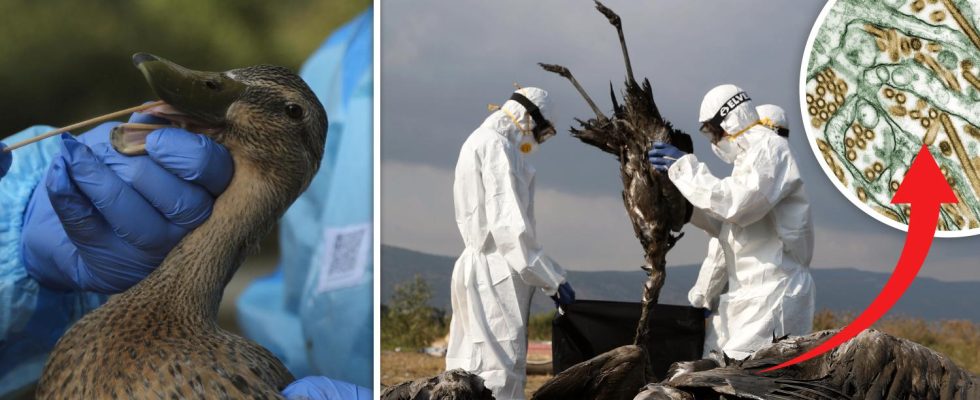Published: Less than 20 min ago
The current variant of bird flu worries scientists.
“The virus is knocking everything out on a scale we’ve never seen before,” says Jennifer Mullinax at the University of Maryland.
The risk of people becoming infected is assessed as low – but the WHO warns that this situation may change.
Bird flu is currently more contagious and more deadly than ever, American scientists warn in a recent study that, among other The Guardian reported on.
The variant of the H5N1 virus that has been spreading among birds and some mammals since 2021 is described as “different”. According to the survey, both wild and domesticated birds are dying at a previously unprecedented rate.
– We have dealt with low-pathogenic bird flu for decades in the poultry industry, but this is something else. This highly pathogenic virus is killing everything on a scale we’ve never seen before, says Jennifer Mullinax, one of the authors behind the new report, to the newspaper.
The researchers compared the ongoing spread of H5N1 in North America to previous waves of avian flu, particularly the 2015 outbreak of the H5N8 virus.
The bottom line: Today’s virus is worse and kills wild birds to a greater extent than before.
58 million poultry dead in the US alone
Industry has also been hit hard. In the US alone, 58 million poultry have died from the virus or been euthanized to stop the spread during the ongoing outbreak.
– It is difficult to estimate how many birds are really affected in the wild, but we see dramatic effects on birds of prey, seabirds and colony nesters. Now we are also seeing the biggest losses of domestic birds due to bird flu so this is a “worst-case scenario”, says Johanna Harvey, lead author of the study, to The Guardian.
The survey also shows that the current virus has gone from being seasonal to spreading year-round.
– Previously, it was mostly during the winter that we saw bird deaths due to bird flu. But this phenomenon we are seeing now is completely new, said Björn Olsen, professor at Uppsala University, to SVT last year.
Bird flu has also spread to several mammals, including sea lions, bears and otters. According to Sky News foxes, dolphins and domestic cats have also been affected.
However, it is very rare for people to become infected.
Mortality 53 percent
According to The Norwegian Public Health Authority’s latest figuresfrom August last year, roughly 860 people in 16 countries have contracted H5N1 since 2003. The mortality rate was 53 percent – but all those affected have been infected after being in contact with birds.
This also applies to the ongoing outbreak.
– All human cases reported since 2022 have been due to fresh contact with poultry. No cases of human-to-human transmission have been observed, says Jennifer Mullinax to The Guardian.
She and her research colleagues are now calling for strong international measures to stop the infection.
– We all have to deal with it together because we cannot afford not to, she says to Sky News.
The WHO currently assesses that the risk to humans is low. However, the head of the organization, Tedros Adhanom Ghebreyesus, warns that this could change.
– We cannot assume that it will continue to be like this and we must prepare for changes, he said at a press conference in February.
Biggest threat: recombination
According to the Public Health Agency, the virus itself is not the biggest threat to humans. The nightmare scenario is instead what is called recombination – that two viruses mix into a completely new one.
“This could happen if a person or other animal was infected by both bird flu and regular seasonal flu at the same time. In such a double infection, the genetic material of the influenza virus can be mixed (recombined) into new variants,” writes the Public Health Agency.
That kind of mixture is believed, according to FHM, to have caused several previous pandemics, for example the “Asian” and the “Hong Kong flu” in the 1950s and 1960s.
According to the authority, there is a vaccine against H5N1, but not on the Swedish market.
